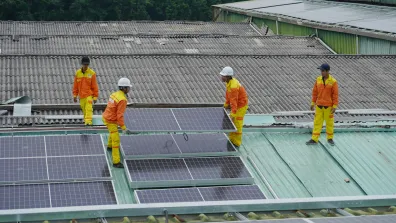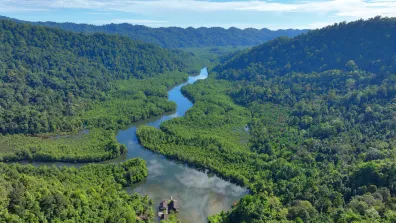Communities mark anniversary of killings of protestors in struggle against Conga mining project in Peru
The project is majority owned by the giant American Newmont Mining Corporation, and 5% owned by the World Bank's International Finance Corporation. Local communities are convinced this project would severely limit and contaminate their water supply, as the aggressive open pit project will destroy the head of the water basin that gives life to 30,000 people in over 200 communities.
Against this threat the local population have formed a strong and organised resistance. A resistance, however, that has been heavily oppressed by the Peruvian national police and the army - on orders from the central government, or working privately for the mining company yet still equipped with their state uniforms and guns.
On 3 and 4 July of this year the people of Celendin and Bambamarca, the centres of two of the provinces affected by the project, will commemorate the one year anniversaries of the deaths of five citizens who were shot dead by the national police and army during protests against the mining project. One of the deceased, Cesar Medina Aguilar, a 16 year old boy and local youth leader, died from a direct shot to the head. The others died from shots to the head, throat and chest, some shots coming from army helicopters from above. To enshrine this state of war that the government had declared on its people, it enforced a state of emergency – suspending civil liberties and subjecting the three provinces of Celendin, Cajamarca and Hualgayoc to intense militarization for a total of 8 months.
Over the past year and a half of the organized protests many more citizens have been injured. One man, receiving a bullet to his spine, is now paralysed. Human rights defenders have been terrorised. An ex-priest and leading human rights defender, Marco Arana was arrested and badly beaten in police custody. When two lawyers went to visit him in prison they were also assaulted. A young human rights reporter, Jorge Chavez, received similar treatment while arrested for filming in a public space. Community leaders have to travel across country to answer to scores of legal allegations – and example of such a charge being “psychological damage to the mining company”.
Yanacocha, the mining company responsible for Minas Conga, on the other hand, have not answered to the damage they have done during the previous 20 years of operation of their existing project in the province of Cajamarca. What the local population have experienced as a result is severe water shortage and contamination of surviving sources with heavy metals. Farmers in the area of influence have reported high levels of animal deformities, the extinction of water life forms, severe water shortage and unusually high rates of cancer, skin diseases and birth deformities. A mercury spill in 2000 poisoned 1,200 villagers of the town of Choropampa.
Yanacocha (composed of Newmont from the US, Buenaventura of Peru and the World Bank) admits its appalling record - “We are not proud of the current state of our relationship with the people of Cajamarca”. However it's a bit late, their exploitation of the Yanacocha mine is nearing an end, and they now want to expand into the province of Celendin with Minas Conga – a project that is due to be three times the size.
The Minas Conga project would consume 3069 hectares of land to extract the gold and copper that lies beneath. They plan to drain and exploit two mountain lakes and the material they will extract will be dumped on top of two others – effectively beheading a complex hydrological system. The water remaining will most likely be polluted with heavy metals - they plan to produce an average of ninety thousand tonnes of toxic waste tailings per day, every day for 17 years.
In the mainly agricultural province of Celendin the vast majority of people have strongly rejected this project. However despite obviously lacking a social license Yanacocha are pressing forward. After the deaths of protesters last year the government and mining company announced a two year suspension of the project. However the farce of this suspension was unequivocally revealed last month when the company publically stated that their first reservoir has been completed, and the second at the Perol mountain lake is due to be completed this year. Once completed they will drain the lake to fill their reservoir, and then commence with the realization of their open pit – 2km wide and 1 deep. Therefore the draining of water from the Perol lake would mark the point of no return.
Two mass mobilisations have taken place since the announcement of the reservoir advancement – one on the 28 May which saw 1,500 villagers attempt to carry out an inspection of the Perol lake and surrounding area but were intercepted by the national police who fired plastic bullets into the crowd, badly injuring one man. This was followed by another on 17 June which saw over 4,000 indignant citizens march to the lake, this time accompanied by the national and international press. They were able to reach the lake on this occasion, and construction site. Local villagers, known as Guardians of the Lagoons, have set up camp near to the site to keep vigilance for further construction. They know that the future of the project, and of the thousands of people whose lives would be destroyed by it, will be decided here.
An important aspect of the campaign has been international support: solidarity groups and individuals across Europe, the United States and Latin America have been marching, writing letters, pressuring investors, and generally raising awareness of the injustice of the situation in Cajamarca, and how concerned citizens around the world can help. Activists in other environmental campaigns such as anti-fracking are seeing the common problem and the common fight, and are connecting in solidarity. But more is needed, because the struggle is immense, but each act of solidarity reinforces the power of the people - a force more durable and more valuable than any metal.


